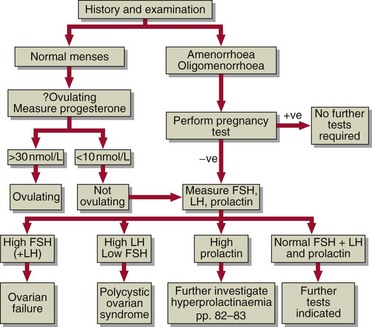51 In women who present with irregular or absent menstruation (oligomenorrhoea or amenorrhoea) or who are not ovulating, hormone measurements may be diagnostic. A protocol for investigation is shown in Figure 51.1. Measurement of oestradiol and gonadotrophin concentrations may detect primary ovarian failure or polycystic ovarian disease. Measurement of prolactin, and androgens, may also assist.
Subfertility
Endocrine investigations in the subfertile woman
Subfertility




